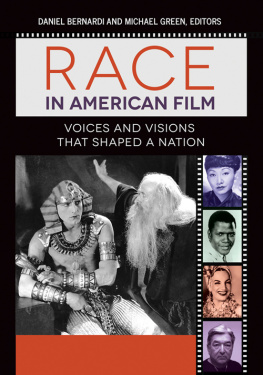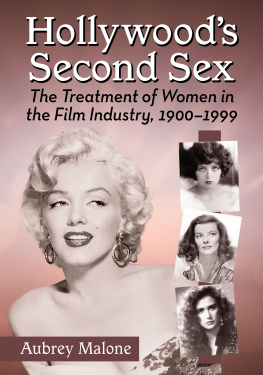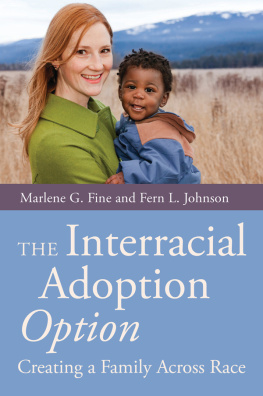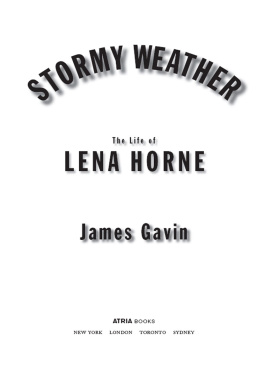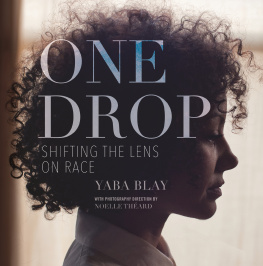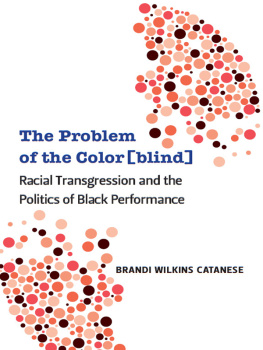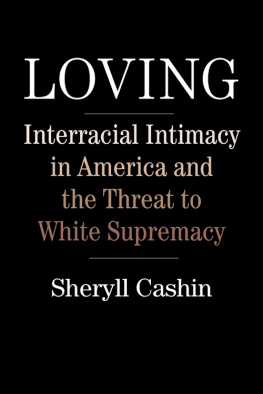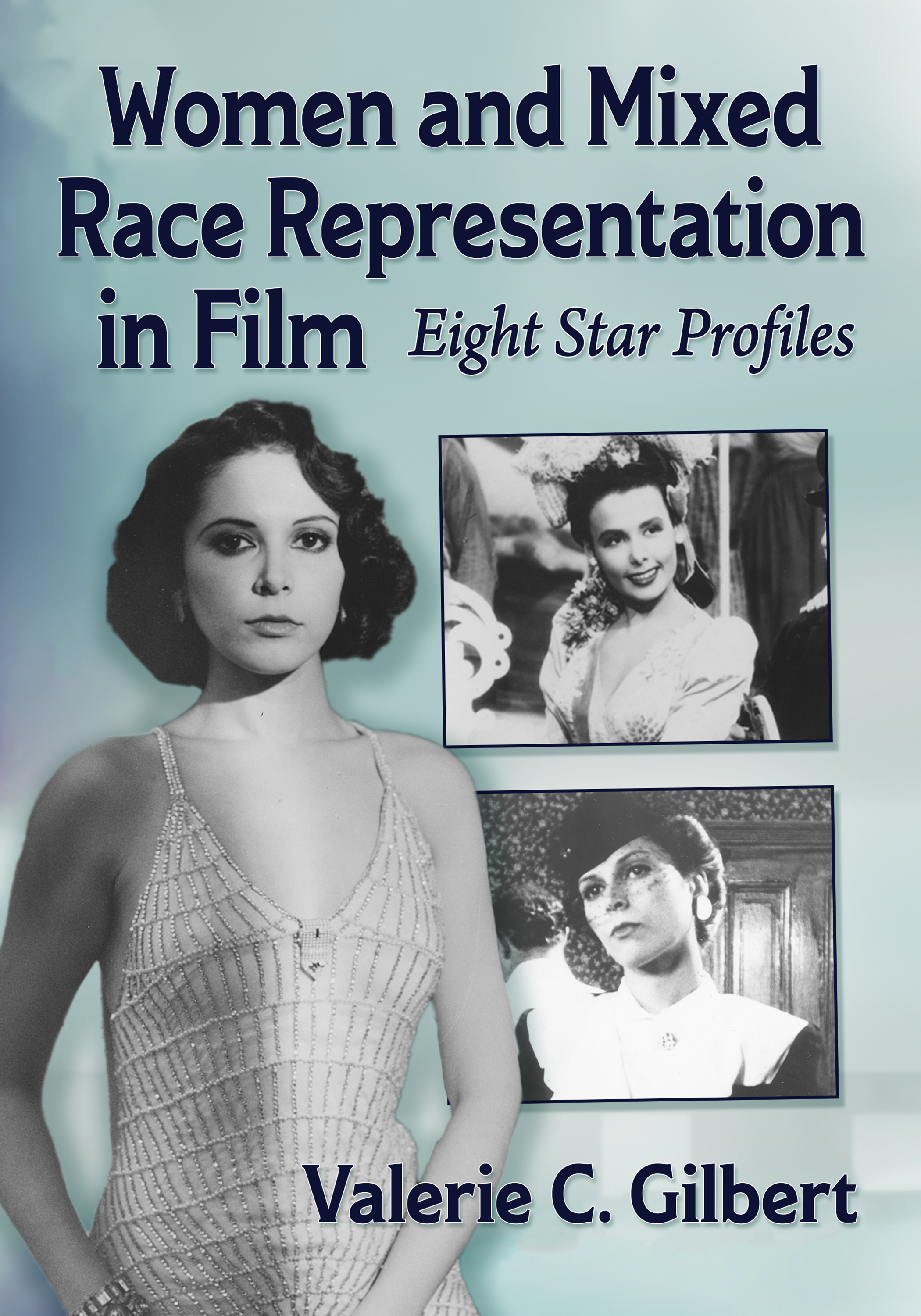Women and Mixed Race Representation in Film
Women and Mixed Race Representation in Film
Eight Star Profiles
Valerie C. Gilbert

McFarland & Company, Inc., Publishers
Jefferson, North Carolina
Library of Congress Cataloguing-in-Publication Data
Names: Gilbert, Valerie C., 1961 author.
Title: Women and mixed race representation in film : eight star profiles / Valerie C. Gilbert.
Description: Jefferson, North Carolina : McFarland & Company, Inc., Publishers, 2021. | Includes bibliographical references and index.
Identifiers: LCCN 2021027070 | ISBN 9781476663388 (paperback : acid free paper)
ISBN 9781476644738 (ebook)
Subjects: LCSH: African American actressesBiography. | African Americans in motion pictures. | Minority women in motion pictures. | Race in motion pictures. | Race relations in motion pictures. | Motion picturesUnited StatesHistory. | BISAC: PERFORMING ARTS / Film / History & Criticism | SOCIAL SCIENCE / Discrimination
Classification: LCC PN1998.2 .G543 2021 | DDC 791.4302/80922 [B]dc23
LC record available at https://lccn.loc.gov/2021027070
British Library cataloguing data are available
ISBN (print) 978-1-4766-6338-8
ISBN (ebook) 978-1-4766-4473-8
2021 Valerie C. Gilbert. All rights reserved
No part of this book may be reproduced or transmitted in any form or by any means, electronic or mechanical, including photocopying or recording, or by any information storage and retrieval system, without permission in writing from the publisher.
On the cover: Lonette McKee, The Cotton Club (1984); Lena Horne stars as tragic mulatto Julie in a mini version of Show Boat from MGMs Till the Clouds Roll By (1947); Lonette McKee plays a studio executive passing for white in Old Hollywood in the Julie Dash short film Illusions (1982)
Printed in the United States of America
McFarland & Company, Inc., Publishers
Box 611, Jefferson, North Carolina 28640
www.mcfarlandpub.com
For my parents,
Rosina and Peter
Table of Contents
Preface
If you are lucky, you see yourself reflected back to you in your family, in stories, in movies and television . Jennifer Beals
The backstory of how I came to write this book is a personal one. I was born in Trinidad on an extended family vacation. I grew up in Canada and have lived all my adult life in the United States. My Trinidadian mother is black. My British father is white. While working on my BFA degree at the University of Washington, I enrolled in a couple of film studies classes. Prior to this, I was not a film lover nor a regular filmgoer. When I did see a movie, if you had asked me about it the next day, I would likely have remembered very little. Film studies changed all that.
Film classes equipped me with a set of basic skills with which to understand film and aroused in me great appreciation for a medium that, up until then, had been of little or no interest to me. They also made me wonder why up to that point I had been so disconnected from the movie experience. Why was going to the movies not a routine and enjoyable part of my life, as it seemed to be for everyone else? I was then reminded of the first time I saw the 1934 film Imitation of Life .
Yes, its a clich, but its also true. The first time I saw Imitation of Life , which was in the 1990s on television, was also the first time I saw myself represented onscreen. Of course, I was raised in an era and a locale vastly different from Imitation of Life s Peola, and I never had the need nor the desire to pass for white as she did. As for my mother, a registered nurse, she never worked as a domestic; she hired them. Nevertheless, I identified with Fredi Washingtons character because she looked white, she talked white, and she had a mother who was obviously black, a depiction that is just about as rare onscreen today as it was in the 1930s. The other way in which I identified with Peola is that like her, I was raised and socialized among white people, and while it was seldom discussed, I was aware, at some level, that even though I was fully assimilated, and essentially the same skin color as those around me, I was not like them. I was not, and could never be, white.
When I was about eleven years old, following the lead of my older sister, I decided to get my hair cut into an afro. I guess it was then that I decided if I cant be white, I might as well embrace being blackto the extent that one can embrace blackness growing up surrounded by white people in a small Canadian prairie city like Regina. At the beginning of my high school years, my family moved to Canadas west coast. In the cosmopolitan city of Vancouver, which had a population many times more than that from where we had come, I just knew there would be some other black kids to bond with. Alas, there were none. Though I could not have articulated it this way at the time, in retrospect I can say that after I graduated high school, I moved to the United States to nurture my connection to blackness, or, to put it more bluntly, to learn how to be black.
Later, beginning in my 30s, I decided to pursue higher education, which culminated many years later in the completion of a Master of Arts in communication. This experience, including film classes, was the beginning of a more conscious, ongoing interrogation of my racial and ethnic identity. With respect to my disconnection to the movie experience, I came to the conclusion that my disinterest had quite a lot to do with a lack of film characters with whom I could identify. Rarely, if ever, did I relate to cinematic white heroines. Nor could I connect with what I must have intuited as the typically unflattering, two-dimensional depictions of black people in film. Aside from Imitation of Life , where, I wondered, could I find representation of people like me? This book is, in part, an answer to that question. The many years I spent researching and writing it have ultimately freed me to become an equal opportunity spectator. I now identify with all kinds of characters in film, regardless of race. Before I could get to this point, though, it was necessary for me to first find myself.
. Jennifer Beals, 16th Annual GLAAD Media Awards-Fort Mason Center San Francisco, Jennifer-beals .com, June 11, 2005, http://www.jennifer-beals.com/speeches/womensnight2004.php.
Introduction
Stars matter because they act out aspects of life that matter to us; and performers get to be stars when what they act out matters to enough people .
Richard Dyer
Women and Mixed Race Representation in Film is a gendered look at film, stardom, and performance from a mixed race perspective. It takes as its subject the star personae of eight American-born actresses: Josephine Baker, Nina Mae McKinney, Fredi Washington, Lena Horne, Dorothy Dandridge, Lonette McKee, Jennifer Beals, and Halle Berry. With respect to this books title, the term mixed race is relatively modern nomenclature that refers to people with parents, or ancestors, of diverse racial identities. Most of these women, because of the era in which they were born and worked, were not considered mixed race, but rather Negro, colored, mulatto, or black.
Regardless of how these actresses have been identified, some have struggled to conform to a singular, static racial identity. Lena Horne, for example, in her autobiography, written when she was well into her 40s, talked about growing up without established roots in either a white or black community. Horne confessed to a lifelong search for an identity and credited most of her career successes with being exhibited as an oddity of her race. Furthermore, in looking at these womens professional work, as well as commentary on their careers, mixed race themes, such as passing, colorism, interracial romance, and identity, all come to the fore.


